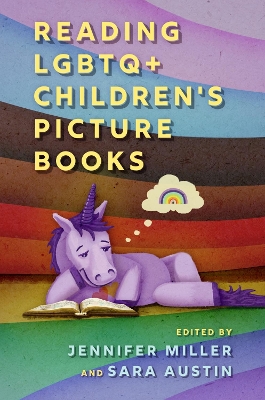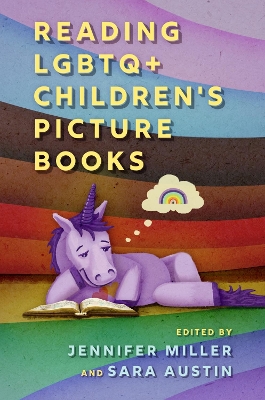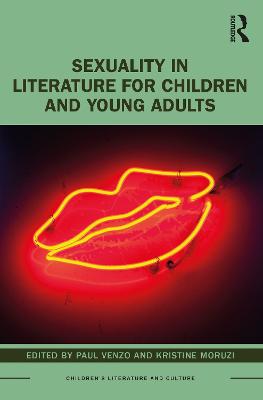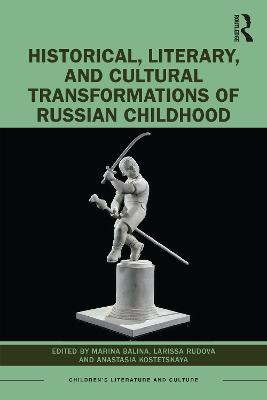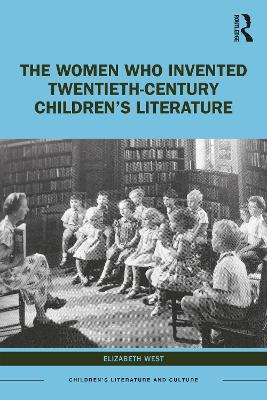Palestinian Memory and Identity in Modern Children's Literature
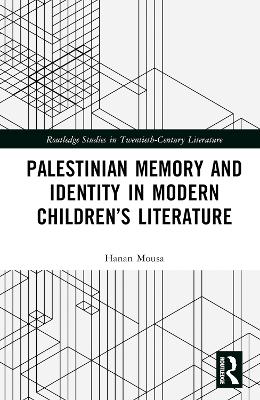 portes grátis
portes grátis
Palestinian Memory and Identity in Modern Children's Literature
Mousa, Hanan
Taylor & Francis Ltd
12/2024
144
Dura
9781032750262
Pré-lançamento - envio 15 a 20 dias após a sua edição
Descrição não disponível.
Preface
PART I
Theoretical Section
Chapter 1 - Introduction: The Features and Significance of Children's Literature
1.1. The Term "Childhood" and its Conception
1.2. The Definition of Children's Literature
1.3. Folk Heritage and Children's Literature
1.4. The Use of Folk Heritage in Arabic Children's Literature
1.5. The Relationship of Children's Literature to Palestinian Folk Heritage
1.6. Summary
Chapter 2 - The History of Palestinian Children's Literature
2.1. Introduction
2.2. Palestinian Children's Literature in the Mandate Era until 1948
2.3. The Development of Indigenous Palestinian Children's Literature after 1948
2.4. Palestinian Children's Literature in the Diaspora since 1948
2.5. Palestinian Children's Literature in the West Bank and Gaza after 1967
Chapter 3 - Folk Heritage and its Forms
3.1. Introduction
3.2. Folk Heritage
3.2.1. Definition
3.2.2. The Interest in Folk Heritage: Beginnings and Trends
3.2.3. The Interest in Folk Heritage Among the Arabs
3.2.4.1. Palestinian Folk Heritage and its Significance
3.2.4.2. Palestinian Folk Heritage in the Orientalist Era
until 1948
3.2.4.3. The First Period After the Nakba (1948-67)
3.2.4.4. The Second Period After the Nakba (1967-86)
3.2.4.5. The Period After the First Intifada Until Today
3.3. The Forms of Folk Heritage
3.3.1. Introduction
3.3.2. Folk Tales
3.3.2.1. The Folk Tale Concept
3.3.2.2. Folk Tales' Features
3.3.2.3. Palestinian Folk Tales
3.3.3. Popular Proverbs
3.3.3.1. The Popular Proverb Concept
3.3.3.2. Popular Proverbs' Features
3.3.3.3. Palestinian Popular Proverbs
3.3.4. Popular Songs
3.3.4.1. The Popular Song Concept
3.3.4.2. Popular Songs' Features
3.3.4.3. Palestinian Popular Songs
PART II
Applied Section
Chapter 4 - The Use of Folk Tales in Palestinian Children's Literature
4.1. Introduction
4.2. The Use of Folk Tales 1967-87
4.2.1. Introduction
4.2.2. The Use of Folk Tale Features
4.2.2.1. The Use of Traditional Beginnings and Endings
4.2.2.2. The Use of Popular Expressions
4.2.2.3. The Use of Repetitive Styles
4.2.2.4. The Use of Descriptive Styles
4.2.2.5. The Use of Dialogic Styles
4.2.3. The Invocation of Folk Characters in Children's Stories
4.2.3.1. Introduction
4.2.3.2. The Traditional Character Concept in Children's Stories
4.2.3.3. The Invocation of the Ghul
4.3. The Use of Folk Tales in the Period 1988-2015
4.3.1. Introduction
4.3.2. Reshaping Folk Tales
4.3.3. The Use of Narration in Folk Tales
4.3.3.1. Forms and Appearances of Narrator Presence in Children's Stories
4.3.3.2. The Use of Narrator Styles in Children's Stories
4.3.4. The Invocation of Traditional Characters in the Second Period
4.3.4.1. The Invocation of the Characters of Al-Shatir Hasan
(Shater Hasan) and the Ghul in Children's Stories
4.3.5. The Use of Folk Tale Features in Children's Stories
4.3.5.1. The Use of Styles of Beginning in Children's Stories
4.3.5.2. The Use of Repetitive Styles in Children's Stories
4.4. Summary
Chapter 5 - The Use of Popular Proverbs in Palestinian Children's Literature
5.1. Introduction
5.2. The Use of Popular Proverbs in the 1967-87 Period
5.2.1. Introduction
5.2.2. Citing Popular Proverbs in the Vernacular Dialect (al-?Ammiya) Form
5.2.3. Citing Popular Proverbs via Converting Them into Classical Arabic
(al-Fu??a)
5.2.4. Citing Popular Proverbs as Titles of Children's Stories (Paratextualism)
5.3. The Use of Popular Proverbs in the 1988-2015 Period
5.3.1. Introduction
5.3.2. Citing Popular Proverbs as Titles of Children's Stories
(Paratextualism)
5.3.2.1. Introduction
5.3.2.2. The Concept of Titles
5.3.2.3. Titles in Children's Stories
5.3.2.4. Citing Popular Proverbs in Children's Stories
5.3.2.5. The Dominance of Popular Proverbs and Their
Prevalence over the Text
5.4. Summary
Chapter 6 - The Use of Popular Songs in Palestinian Children's Literature
6.1. Introduction
6.2. The Use of Popular Songs in the First Period (1967-87)
6.2.1. Introduction
6.2.2. The Use of Popular Song Names and Related Aspects (Allusion)
in the First Period
6.2.3. The Citation of Popular Song Names Converted into
Classical Arabic (al-Fu??a) Form in the First Period
6.3. The Use of Popular Songs in the 1988-2015 Period
6.3.1. Introduction
6.3.2. The Use of Song Names and Related Aspects (Allusion)
in the Second Period
6.3.3. The Use of Popular Songs in Vernacular Dialect (al-?Ammiya) Form
6.3.4. The Use of Popular Songs Converted into Classical Arabic
(al-Fu??a)Form
6.3.5. Narration of Popular Song Styles
6.3.6. The Use of Popular Songs as Titles of Children's Stories
in the Second Period (Paratextualism)
6.3.7. Summary
Conclusion
Sources and References
1. List of Sources and References
1.1. Arabic-Language Sources
2. References
2.1. Arabic-Language References
2.2. Foreign-Language References
Hebrew-Language References
PART I
Theoretical Section
Chapter 1 - Introduction: The Features and Significance of Children's Literature
1.1. The Term "Childhood" and its Conception
1.2. The Definition of Children's Literature
1.3. Folk Heritage and Children's Literature
1.4. The Use of Folk Heritage in Arabic Children's Literature
1.5. The Relationship of Children's Literature to Palestinian Folk Heritage
1.6. Summary
Chapter 2 - The History of Palestinian Children's Literature
2.1. Introduction
2.2. Palestinian Children's Literature in the Mandate Era until 1948
2.3. The Development of Indigenous Palestinian Children's Literature after 1948
2.4. Palestinian Children's Literature in the Diaspora since 1948
2.5. Palestinian Children's Literature in the West Bank and Gaza after 1967
Chapter 3 - Folk Heritage and its Forms
3.1. Introduction
3.2. Folk Heritage
3.2.1. Definition
3.2.2. The Interest in Folk Heritage: Beginnings and Trends
3.2.3. The Interest in Folk Heritage Among the Arabs
3.2.4.1. Palestinian Folk Heritage and its Significance
3.2.4.2. Palestinian Folk Heritage in the Orientalist Era
until 1948
3.2.4.3. The First Period After the Nakba (1948-67)
3.2.4.4. The Second Period After the Nakba (1967-86)
3.2.4.5. The Period After the First Intifada Until Today
3.3. The Forms of Folk Heritage
3.3.1. Introduction
3.3.2. Folk Tales
3.3.2.1. The Folk Tale Concept
3.3.2.2. Folk Tales' Features
3.3.2.3. Palestinian Folk Tales
3.3.3. Popular Proverbs
3.3.3.1. The Popular Proverb Concept
3.3.3.2. Popular Proverbs' Features
3.3.3.3. Palestinian Popular Proverbs
3.3.4. Popular Songs
3.3.4.1. The Popular Song Concept
3.3.4.2. Popular Songs' Features
3.3.4.3. Palestinian Popular Songs
PART II
Applied Section
Chapter 4 - The Use of Folk Tales in Palestinian Children's Literature
4.1. Introduction
4.2. The Use of Folk Tales 1967-87
4.2.1. Introduction
4.2.2. The Use of Folk Tale Features
4.2.2.1. The Use of Traditional Beginnings and Endings
4.2.2.2. The Use of Popular Expressions
4.2.2.3. The Use of Repetitive Styles
4.2.2.4. The Use of Descriptive Styles
4.2.2.5. The Use of Dialogic Styles
4.2.3. The Invocation of Folk Characters in Children's Stories
4.2.3.1. Introduction
4.2.3.2. The Traditional Character Concept in Children's Stories
4.2.3.3. The Invocation of the Ghul
4.3. The Use of Folk Tales in the Period 1988-2015
4.3.1. Introduction
4.3.2. Reshaping Folk Tales
4.3.3. The Use of Narration in Folk Tales
4.3.3.1. Forms and Appearances of Narrator Presence in Children's Stories
4.3.3.2. The Use of Narrator Styles in Children's Stories
4.3.4. The Invocation of Traditional Characters in the Second Period
4.3.4.1. The Invocation of the Characters of Al-Shatir Hasan
(Shater Hasan) and the Ghul in Children's Stories
4.3.5. The Use of Folk Tale Features in Children's Stories
4.3.5.1. The Use of Styles of Beginning in Children's Stories
4.3.5.2. The Use of Repetitive Styles in Children's Stories
4.4. Summary
Chapter 5 - The Use of Popular Proverbs in Palestinian Children's Literature
5.1. Introduction
5.2. The Use of Popular Proverbs in the 1967-87 Period
5.2.1. Introduction
5.2.2. Citing Popular Proverbs in the Vernacular Dialect (al-?Ammiya) Form
5.2.3. Citing Popular Proverbs via Converting Them into Classical Arabic
(al-Fu??a)
5.2.4. Citing Popular Proverbs as Titles of Children's Stories (Paratextualism)
5.3. The Use of Popular Proverbs in the 1988-2015 Period
5.3.1. Introduction
5.3.2. Citing Popular Proverbs as Titles of Children's Stories
(Paratextualism)
5.3.2.1. Introduction
5.3.2.2. The Concept of Titles
5.3.2.3. Titles in Children's Stories
5.3.2.4. Citing Popular Proverbs in Children's Stories
5.3.2.5. The Dominance of Popular Proverbs and Their
Prevalence over the Text
5.4. Summary
Chapter 6 - The Use of Popular Songs in Palestinian Children's Literature
6.1. Introduction
6.2. The Use of Popular Songs in the First Period (1967-87)
6.2.1. Introduction
6.2.2. The Use of Popular Song Names and Related Aspects (Allusion)
in the First Period
6.2.3. The Citation of Popular Song Names Converted into
Classical Arabic (al-Fu??a) Form in the First Period
6.3. The Use of Popular Songs in the 1988-2015 Period
6.3.1. Introduction
6.3.2. The Use of Song Names and Related Aspects (Allusion)
in the Second Period
6.3.3. The Use of Popular Songs in Vernacular Dialect (al-?Ammiya) Form
6.3.4. The Use of Popular Songs Converted into Classical Arabic
(al-Fu??a)Form
6.3.5. Narration of Popular Song Styles
6.3.6. The Use of Popular Songs as Titles of Children's Stories
in the Second Period (Paratextualism)
6.3.7. Summary
Conclusion
Sources and References
1. List of Sources and References
1.1. Arabic-Language Sources
2. References
2.1. Arabic-Language References
2.2. Foreign-Language References
Hebrew-Language References
Este título pertence ao(s) assunto(s) indicados(s). Para ver outros títulos clique no assunto desejado.
Modern Children's Literature;Children's Literature;Arabic Children's Literature;Middle Eastern Literature;Palestinian Children's Literature
Preface
PART I
Theoretical Section
Chapter 1 - Introduction: The Features and Significance of Children's Literature
1.1. The Term "Childhood" and its Conception
1.2. The Definition of Children's Literature
1.3. Folk Heritage and Children's Literature
1.4. The Use of Folk Heritage in Arabic Children's Literature
1.5. The Relationship of Children's Literature to Palestinian Folk Heritage
1.6. Summary
Chapter 2 - The History of Palestinian Children's Literature
2.1. Introduction
2.2. Palestinian Children's Literature in the Mandate Era until 1948
2.3. The Development of Indigenous Palestinian Children's Literature after 1948
2.4. Palestinian Children's Literature in the Diaspora since 1948
2.5. Palestinian Children's Literature in the West Bank and Gaza after 1967
Chapter 3 - Folk Heritage and its Forms
3.1. Introduction
3.2. Folk Heritage
3.2.1. Definition
3.2.2. The Interest in Folk Heritage: Beginnings and Trends
3.2.3. The Interest in Folk Heritage Among the Arabs
3.2.4.1. Palestinian Folk Heritage and its Significance
3.2.4.2. Palestinian Folk Heritage in the Orientalist Era
until 1948
3.2.4.3. The First Period After the Nakba (1948-67)
3.2.4.4. The Second Period After the Nakba (1967-86)
3.2.4.5. The Period After the First Intifada Until Today
3.3. The Forms of Folk Heritage
3.3.1. Introduction
3.3.2. Folk Tales
3.3.2.1. The Folk Tale Concept
3.3.2.2. Folk Tales' Features
3.3.2.3. Palestinian Folk Tales
3.3.3. Popular Proverbs
3.3.3.1. The Popular Proverb Concept
3.3.3.2. Popular Proverbs' Features
3.3.3.3. Palestinian Popular Proverbs
3.3.4. Popular Songs
3.3.4.1. The Popular Song Concept
3.3.4.2. Popular Songs' Features
3.3.4.3. Palestinian Popular Songs
PART II
Applied Section
Chapter 4 - The Use of Folk Tales in Palestinian Children's Literature
4.1. Introduction
4.2. The Use of Folk Tales 1967-87
4.2.1. Introduction
4.2.2. The Use of Folk Tale Features
4.2.2.1. The Use of Traditional Beginnings and Endings
4.2.2.2. The Use of Popular Expressions
4.2.2.3. The Use of Repetitive Styles
4.2.2.4. The Use of Descriptive Styles
4.2.2.5. The Use of Dialogic Styles
4.2.3. The Invocation of Folk Characters in Children's Stories
4.2.3.1. Introduction
4.2.3.2. The Traditional Character Concept in Children's Stories
4.2.3.3. The Invocation of the Ghul
4.3. The Use of Folk Tales in the Period 1988-2015
4.3.1. Introduction
4.3.2. Reshaping Folk Tales
4.3.3. The Use of Narration in Folk Tales
4.3.3.1. Forms and Appearances of Narrator Presence in Children's Stories
4.3.3.2. The Use of Narrator Styles in Children's Stories
4.3.4. The Invocation of Traditional Characters in the Second Period
4.3.4.1. The Invocation of the Characters of Al-Shatir Hasan
(Shater Hasan) and the Ghul in Children's Stories
4.3.5. The Use of Folk Tale Features in Children's Stories
4.3.5.1. The Use of Styles of Beginning in Children's Stories
4.3.5.2. The Use of Repetitive Styles in Children's Stories
4.4. Summary
Chapter 5 - The Use of Popular Proverbs in Palestinian Children's Literature
5.1. Introduction
5.2. The Use of Popular Proverbs in the 1967-87 Period
5.2.1. Introduction
5.2.2. Citing Popular Proverbs in the Vernacular Dialect (al-?Ammiya) Form
5.2.3. Citing Popular Proverbs via Converting Them into Classical Arabic
(al-Fu??a)
5.2.4. Citing Popular Proverbs as Titles of Children's Stories (Paratextualism)
5.3. The Use of Popular Proverbs in the 1988-2015 Period
5.3.1. Introduction
5.3.2. Citing Popular Proverbs as Titles of Children's Stories
(Paratextualism)
5.3.2.1. Introduction
5.3.2.2. The Concept of Titles
5.3.2.3. Titles in Children's Stories
5.3.2.4. Citing Popular Proverbs in Children's Stories
5.3.2.5. The Dominance of Popular Proverbs and Their
Prevalence over the Text
5.4. Summary
Chapter 6 - The Use of Popular Songs in Palestinian Children's Literature
6.1. Introduction
6.2. The Use of Popular Songs in the First Period (1967-87)
6.2.1. Introduction
6.2.2. The Use of Popular Song Names and Related Aspects (Allusion)
in the First Period
6.2.3. The Citation of Popular Song Names Converted into
Classical Arabic (al-Fu??a) Form in the First Period
6.3. The Use of Popular Songs in the 1988-2015 Period
6.3.1. Introduction
6.3.2. The Use of Song Names and Related Aspects (Allusion)
in the Second Period
6.3.3. The Use of Popular Songs in Vernacular Dialect (al-?Ammiya) Form
6.3.4. The Use of Popular Songs Converted into Classical Arabic
(al-Fu??a)Form
6.3.5. Narration of Popular Song Styles
6.3.6. The Use of Popular Songs as Titles of Children's Stories
in the Second Period (Paratextualism)
6.3.7. Summary
Conclusion
Sources and References
1. List of Sources and References
1.1. Arabic-Language Sources
2. References
2.1. Arabic-Language References
2.2. Foreign-Language References
Hebrew-Language References
PART I
Theoretical Section
Chapter 1 - Introduction: The Features and Significance of Children's Literature
1.1. The Term "Childhood" and its Conception
1.2. The Definition of Children's Literature
1.3. Folk Heritage and Children's Literature
1.4. The Use of Folk Heritage in Arabic Children's Literature
1.5. The Relationship of Children's Literature to Palestinian Folk Heritage
1.6. Summary
Chapter 2 - The History of Palestinian Children's Literature
2.1. Introduction
2.2. Palestinian Children's Literature in the Mandate Era until 1948
2.3. The Development of Indigenous Palestinian Children's Literature after 1948
2.4. Palestinian Children's Literature in the Diaspora since 1948
2.5. Palestinian Children's Literature in the West Bank and Gaza after 1967
Chapter 3 - Folk Heritage and its Forms
3.1. Introduction
3.2. Folk Heritage
3.2.1. Definition
3.2.2. The Interest in Folk Heritage: Beginnings and Trends
3.2.3. The Interest in Folk Heritage Among the Arabs
3.2.4.1. Palestinian Folk Heritage and its Significance
3.2.4.2. Palestinian Folk Heritage in the Orientalist Era
until 1948
3.2.4.3. The First Period After the Nakba (1948-67)
3.2.4.4. The Second Period After the Nakba (1967-86)
3.2.4.5. The Period After the First Intifada Until Today
3.3. The Forms of Folk Heritage
3.3.1. Introduction
3.3.2. Folk Tales
3.3.2.1. The Folk Tale Concept
3.3.2.2. Folk Tales' Features
3.3.2.3. Palestinian Folk Tales
3.3.3. Popular Proverbs
3.3.3.1. The Popular Proverb Concept
3.3.3.2. Popular Proverbs' Features
3.3.3.3. Palestinian Popular Proverbs
3.3.4. Popular Songs
3.3.4.1. The Popular Song Concept
3.3.4.2. Popular Songs' Features
3.3.4.3. Palestinian Popular Songs
PART II
Applied Section
Chapter 4 - The Use of Folk Tales in Palestinian Children's Literature
4.1. Introduction
4.2. The Use of Folk Tales 1967-87
4.2.1. Introduction
4.2.2. The Use of Folk Tale Features
4.2.2.1. The Use of Traditional Beginnings and Endings
4.2.2.2. The Use of Popular Expressions
4.2.2.3. The Use of Repetitive Styles
4.2.2.4. The Use of Descriptive Styles
4.2.2.5. The Use of Dialogic Styles
4.2.3. The Invocation of Folk Characters in Children's Stories
4.2.3.1. Introduction
4.2.3.2. The Traditional Character Concept in Children's Stories
4.2.3.3. The Invocation of the Ghul
4.3. The Use of Folk Tales in the Period 1988-2015
4.3.1. Introduction
4.3.2. Reshaping Folk Tales
4.3.3. The Use of Narration in Folk Tales
4.3.3.1. Forms and Appearances of Narrator Presence in Children's Stories
4.3.3.2. The Use of Narrator Styles in Children's Stories
4.3.4. The Invocation of Traditional Characters in the Second Period
4.3.4.1. The Invocation of the Characters of Al-Shatir Hasan
(Shater Hasan) and the Ghul in Children's Stories
4.3.5. The Use of Folk Tale Features in Children's Stories
4.3.5.1. The Use of Styles of Beginning in Children's Stories
4.3.5.2. The Use of Repetitive Styles in Children's Stories
4.4. Summary
Chapter 5 - The Use of Popular Proverbs in Palestinian Children's Literature
5.1. Introduction
5.2. The Use of Popular Proverbs in the 1967-87 Period
5.2.1. Introduction
5.2.2. Citing Popular Proverbs in the Vernacular Dialect (al-?Ammiya) Form
5.2.3. Citing Popular Proverbs via Converting Them into Classical Arabic
(al-Fu??a)
5.2.4. Citing Popular Proverbs as Titles of Children's Stories (Paratextualism)
5.3. The Use of Popular Proverbs in the 1988-2015 Period
5.3.1. Introduction
5.3.2. Citing Popular Proverbs as Titles of Children's Stories
(Paratextualism)
5.3.2.1. Introduction
5.3.2.2. The Concept of Titles
5.3.2.3. Titles in Children's Stories
5.3.2.4. Citing Popular Proverbs in Children's Stories
5.3.2.5. The Dominance of Popular Proverbs and Their
Prevalence over the Text
5.4. Summary
Chapter 6 - The Use of Popular Songs in Palestinian Children's Literature
6.1. Introduction
6.2. The Use of Popular Songs in the First Period (1967-87)
6.2.1. Introduction
6.2.2. The Use of Popular Song Names and Related Aspects (Allusion)
in the First Period
6.2.3. The Citation of Popular Song Names Converted into
Classical Arabic (al-Fu??a) Form in the First Period
6.3. The Use of Popular Songs in the 1988-2015 Period
6.3.1. Introduction
6.3.2. The Use of Song Names and Related Aspects (Allusion)
in the Second Period
6.3.3. The Use of Popular Songs in Vernacular Dialect (al-?Ammiya) Form
6.3.4. The Use of Popular Songs Converted into Classical Arabic
(al-Fu??a)Form
6.3.5. Narration of Popular Song Styles
6.3.6. The Use of Popular Songs as Titles of Children's Stories
in the Second Period (Paratextualism)
6.3.7. Summary
Conclusion
Sources and References
1. List of Sources and References
1.1. Arabic-Language Sources
2. References
2.1. Arabic-Language References
2.2. Foreign-Language References
Hebrew-Language References
Este título pertence ao(s) assunto(s) indicados(s). Para ver outros títulos clique no assunto desejado.


